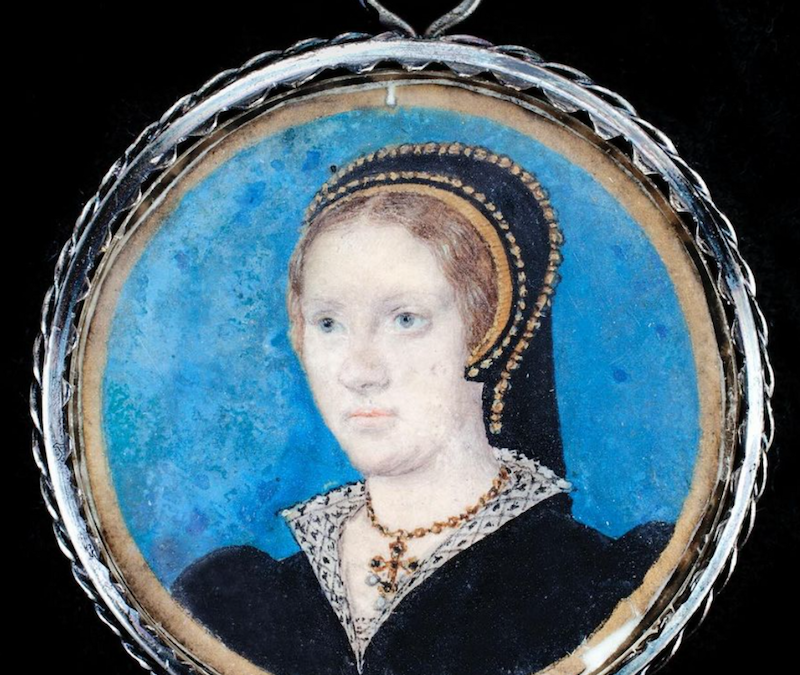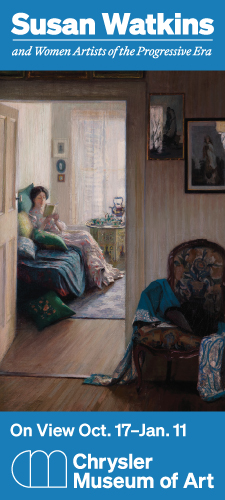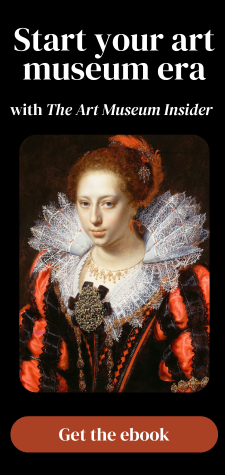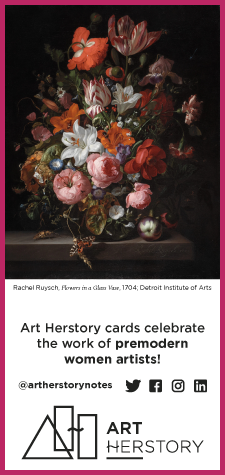Guest post by Sylvia Barbara Soberton, author, independent researcher and art historian
The Horenbouts, a family of Flemish painters, came to England in the 1520s to work at the court of Henry VIII. By that time Gerard was already established as a skilled artist. He worked for Archduchess Margaret of Austria, one of the greatest sixteenth-century patronesses of art, before relocating to England. Lucas, Gerard’s son, was first recorded as painter at Henry VIII’s court in September 1525. However, there was other, equally talented, member of the family, whose contributions are often overlooked: Gerard’s daughter and Lucas’s sister Susanna Horenbout.
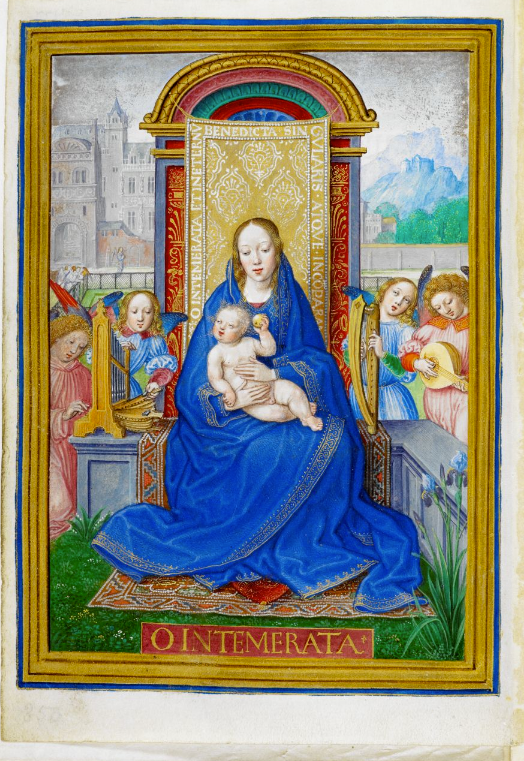
German painter Albrecht Dürer met Susanna in Antwerp in 1521, when she was just eighteen. He bought her Saviour picture and marveled “that a woman should be able to do such work.” Italian writer Lodovico Guicciardini praised Susanna as “an excellent painter, especially in making of very small works [miniatures] beyond all belief; and most excellent in illuminating [manuscripts] so that the great King Henry VIII brought her to England with great gifts and provisions.”
As praise from Dürer and Guicciardini attests, Susanna worked as a manuscript illuminator and painter of miniatures. Kathleen E. Kennedy pointed out that Gerard Horenbout was not only an artist but also a copyist. When he was working for Margaret of Austria, he received payments not only for art but also for script. Gerard hired a copyist to work on the Sforza Hours. Therefore Susanna likely learned the art of painting and writing from her father, and possibly worked as a scribe.
“Lady Parker”
Until very recently, we knew neither of any extant examples of Susanna’s likeness or her works. In my recent paper for the Royal Studies Journal, I proposed that the “Lady Parker” from one of Hans Holbein’s sketches depicts Susanna, the wife of John Parker, Yeoman of the King’s Wardrobe of Robes and Keeper of the Palace of Westminster. The Royal Collection preserves the drawing; the current label identifies the sitter as Grace Newport Parker (1523–1538). But there are good indications that Grace was not Holbein’s sitter. She was not prominent in court circles. Susanna, a skilled painter and wife of a prominent court official, is a more likely candidate as the subject of Holbein’s “Lady Parker.” Susanna served as a “gentlewoman” in the households of at least four of Henry VIII’s six wives. Documents from the period mention her many times.
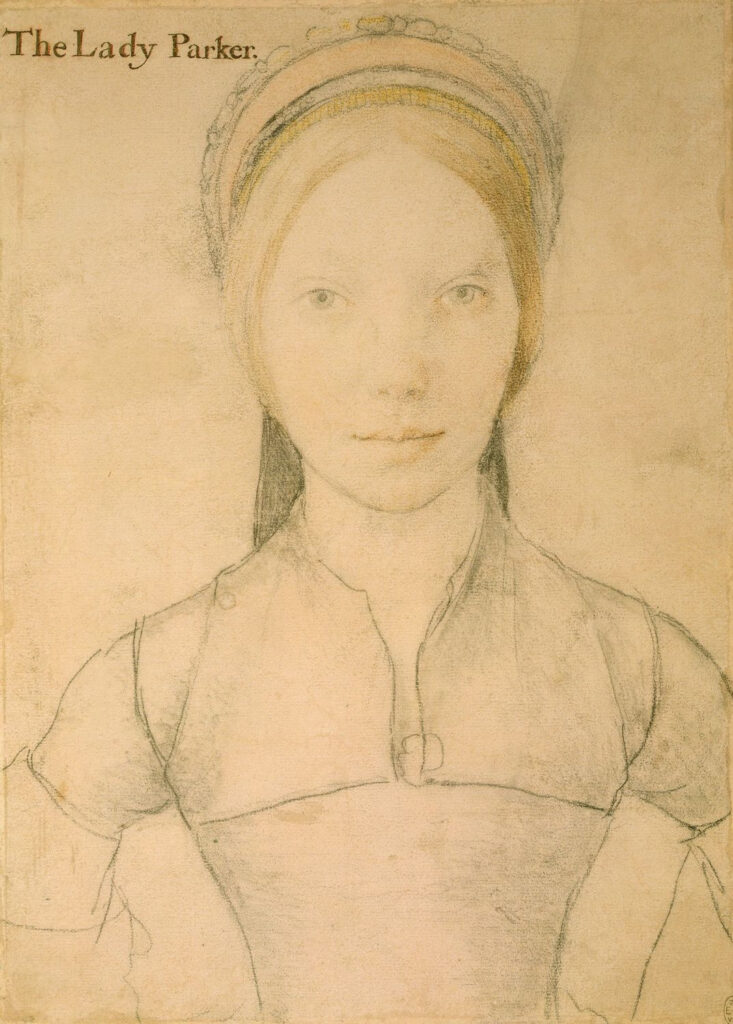
Importance of the Holbein drawing
If Susanna is the “Lady Parker” from Hans Holbein’s sketch, it is a significant commission. It represents the first portrait of a female painter active in sixteenth-century England. Other female artists in sixteenth-century Europe produced self-portraits, highlighting the importance of preserving their own images for posterity.
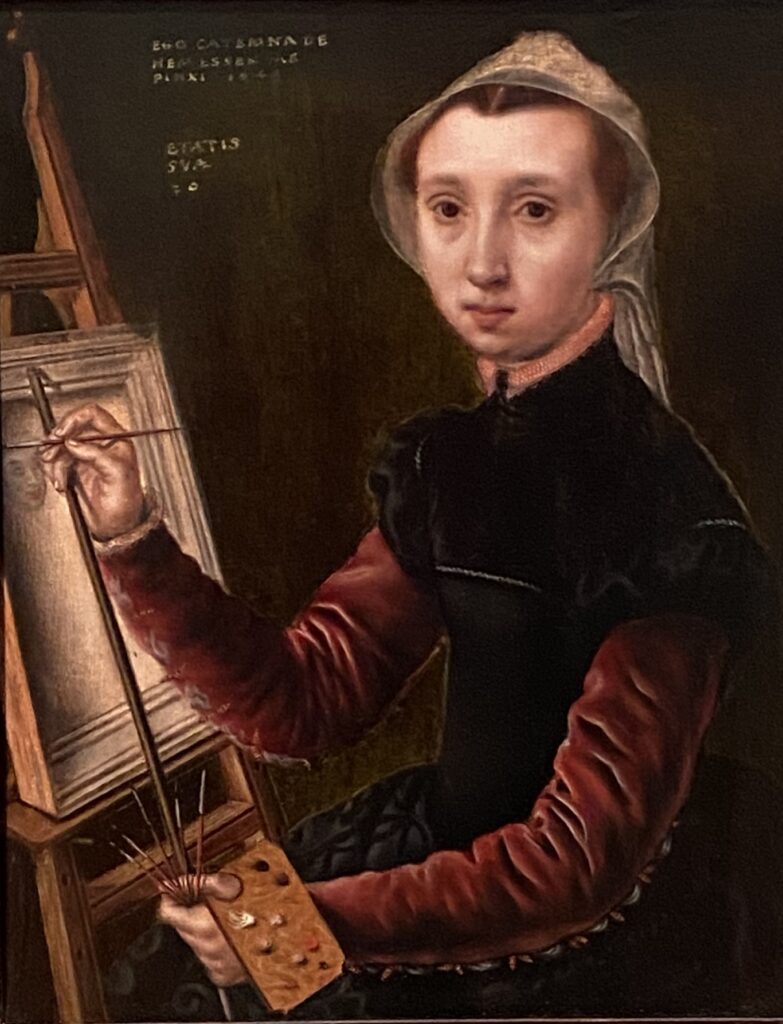
One of Susanna’s contemporaries, Catharina van Hemessen (1528–1565), signed her self-portrait, which she painted at the age of twenty, with the following inscription in Latin: “I, Catherine van Hemessen, have painted myself / 1548/.” Likewise, Sofonisba Anguissola, a talented Renaissance painter who attended the queen at the Spanish court, created at least two self-portraits.
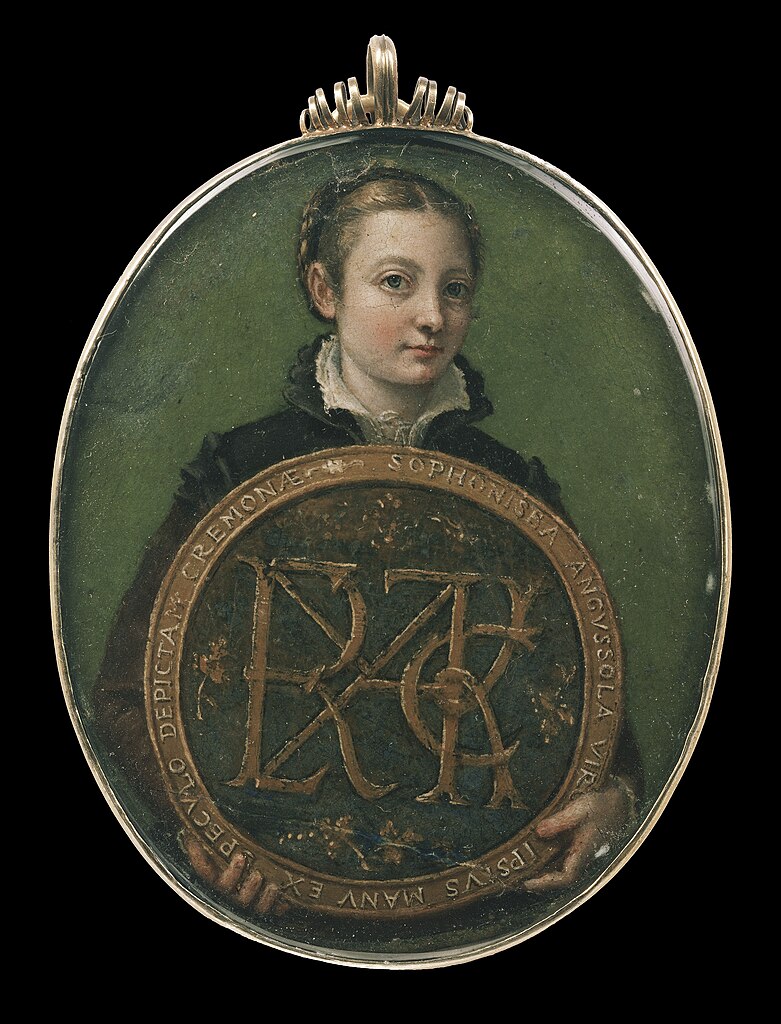
We know of no self-portrait of Susanna, but a commission from a fellow painter seems plausible. It would have served as an enhancement of her reputation and value as an artist herself, since association with a master like Holbein would lend prestige and credibility to her own body of work.
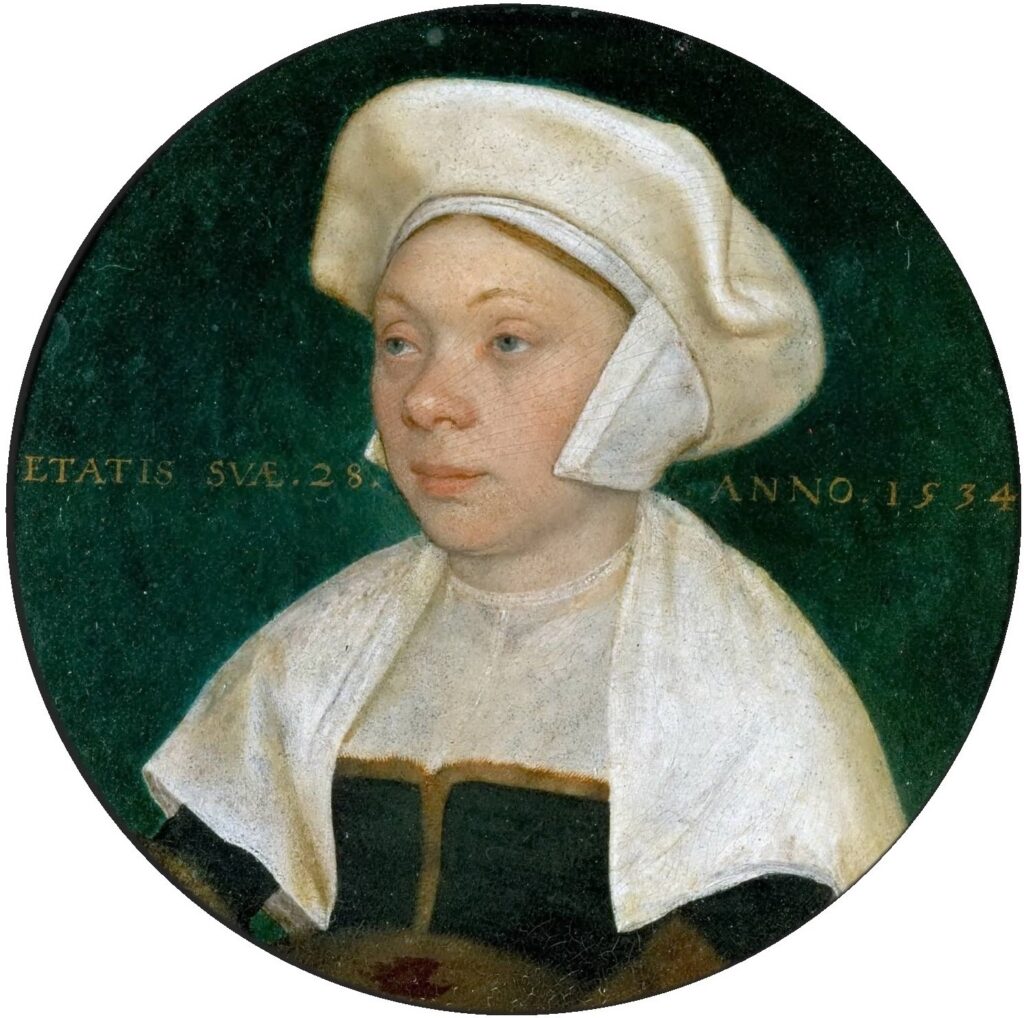
It is often incorrectly stated that a miniature preserved in the Kunsthistorisches Museum in Vienna depicts Susanna. The inscription indicates that the Vienna sitter was twenty-eight in 1534, which would place her birth in 1506. But Albrecht Dürer, who met Susanna, remarked in 1521 that she was about eighteen years old, which means she was born c. 1503. The dress of the Vienna sitter is modest, not that of a lady of the Tudor court. Susanna served as gentlewoman to Henry VIII’s queens and would have dressed similarly to other court ladies. The entry in the catalogue at the Kunsthistorisches Museum identifies the woman as “the wife of servant at the court of Henry VIII” and not as Susanna Horenbout.
Susanna’s lost miniature(s) found
Susan E. James argued that Susanna’s earliest surviving work at the Tudor court is the miniature of Henry VIII from the letters patent of Thomas Forster dating to 28 April 1524. This image is similar to the miniature of the king from the Royal Collection, and it led James to propose that this miniature too is the work of Susanna, but historian Robert Tittler refuted this theory.
Until recently expert did not know of any surviving works by Susanna. Most of the miniatures the Horenbout workshop produced were later attributed to Lucas, resulting in the seeming dearth of works by Susanna. Lucas served as royal painter from 1525 to his death in 1544, producing miniatures of the royal family and various courtiers, whereas the existing household accounts do not name Susanna as a painter. Queens Mary I and Elizabeth I later employed Levina Teerlinc, a Flemish female artist whom Tudor court documents record as a “paintrix” in 1546, but we do not have a similar record of Susanna as a “paintrix.” However, contemporaries praised Susanna for her great skill in creating “small works,” miniatures, so she was active as a painter.
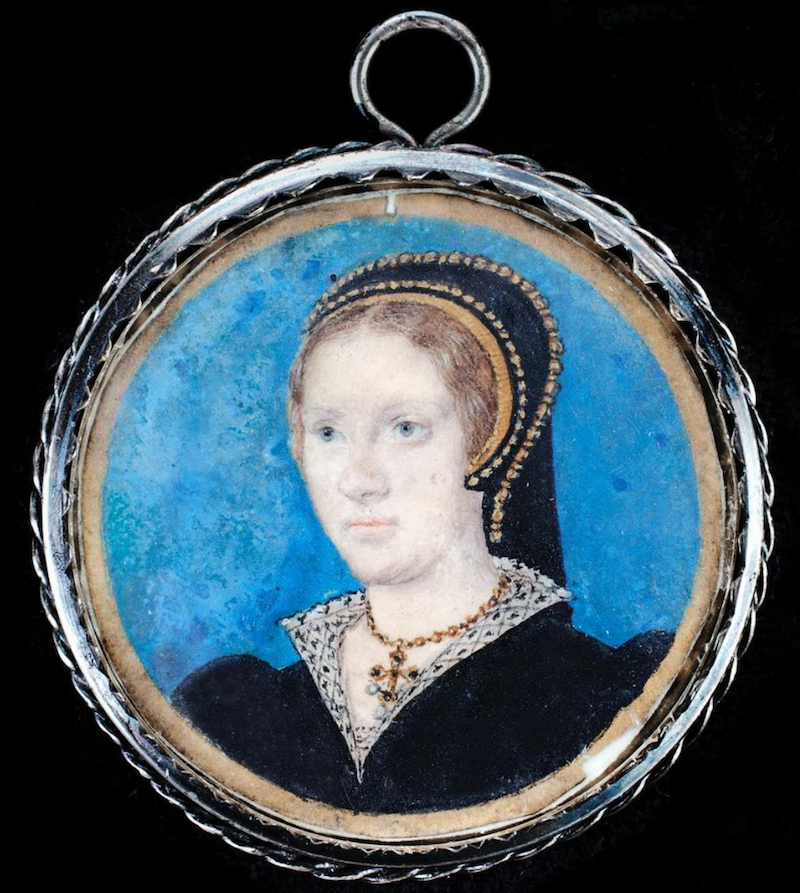
Recently a team of researchers led by Emma Rutherford has attributed to Susanna a miniature painted c. 1546. The former label identified the sitter as Katherine Parr, but as the work now bears the label of Lady Mary Tudor, Henry VIII’s elder daughter. Gerard and Lucas Horenbout were dead by this date, which strengthens the case for its authorship by Susanna.
Anne of Cleves—Susanna’s miniature?
There might be one more work by Susanna that has been hitherto attributed to someone else. The Victoria & Albert Museum in London preserves a miniature of Henry VIII’s fourth wife, Anne of Cleves, set in a turned ivory box with a lid carved to resemble a rose. Curators in the V&A believe that the ivory box container “probably dates” from the late sixteenth century. They note that such skilled turning of ivory was unknown in sixteenth-century England but was common in Germany. At the time, collections of masterfully crafted ivory pieces were being assembled in Dresden and Munich. Henry VIII sent Susanna to Germany in October 1539.
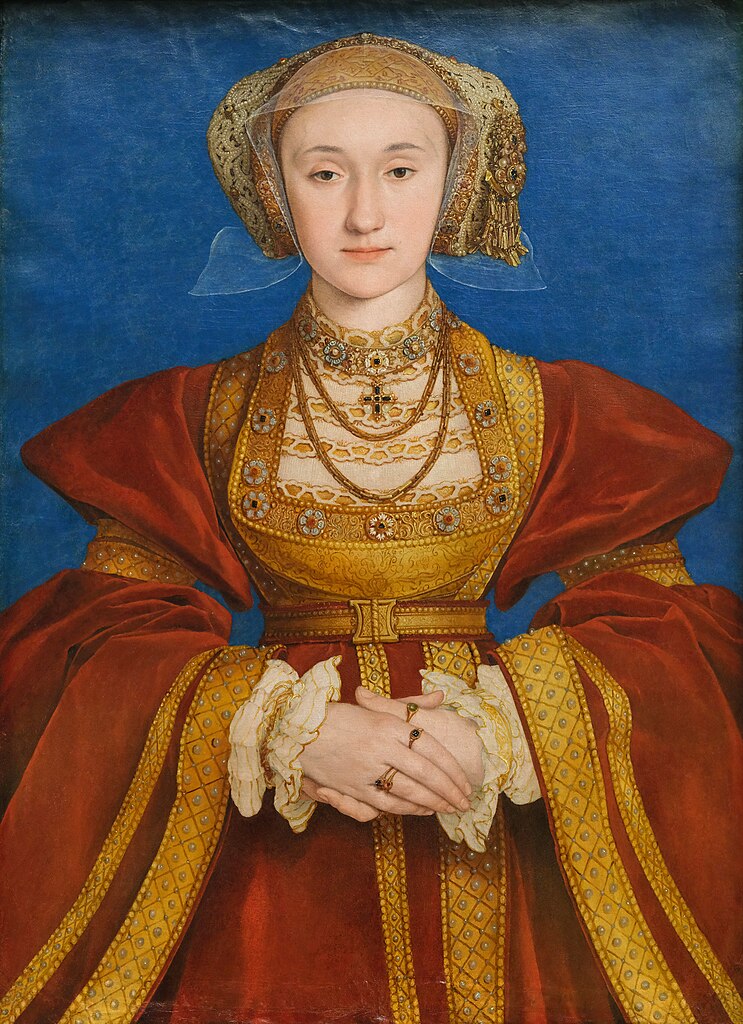
Therefore it is not impossible that she painted that miniature and ordered the ivory case from a German workshop. The miniature is traditionally attributed to Hans Holbein, but this depiction of Anne of Cleves differs considerably from Holbein’s portrait of Anne on display at the Louvre. The Louvre painting portrays Anne’s eyes, nose and mouth with perceivable differences. This allows the possibility that Hans Holbein, who always painted a particular sitter with the same features, did not paint the Louvre artwork. The artist of this miniature modelled it on Holbein’s portrait of Anne of Cleves, as is evident from her clothing, which is the same in both works. One could argue that the miniature was either created by one of the Horenbouts, or in the workshop of Hans Holbein by one of his apprentices.
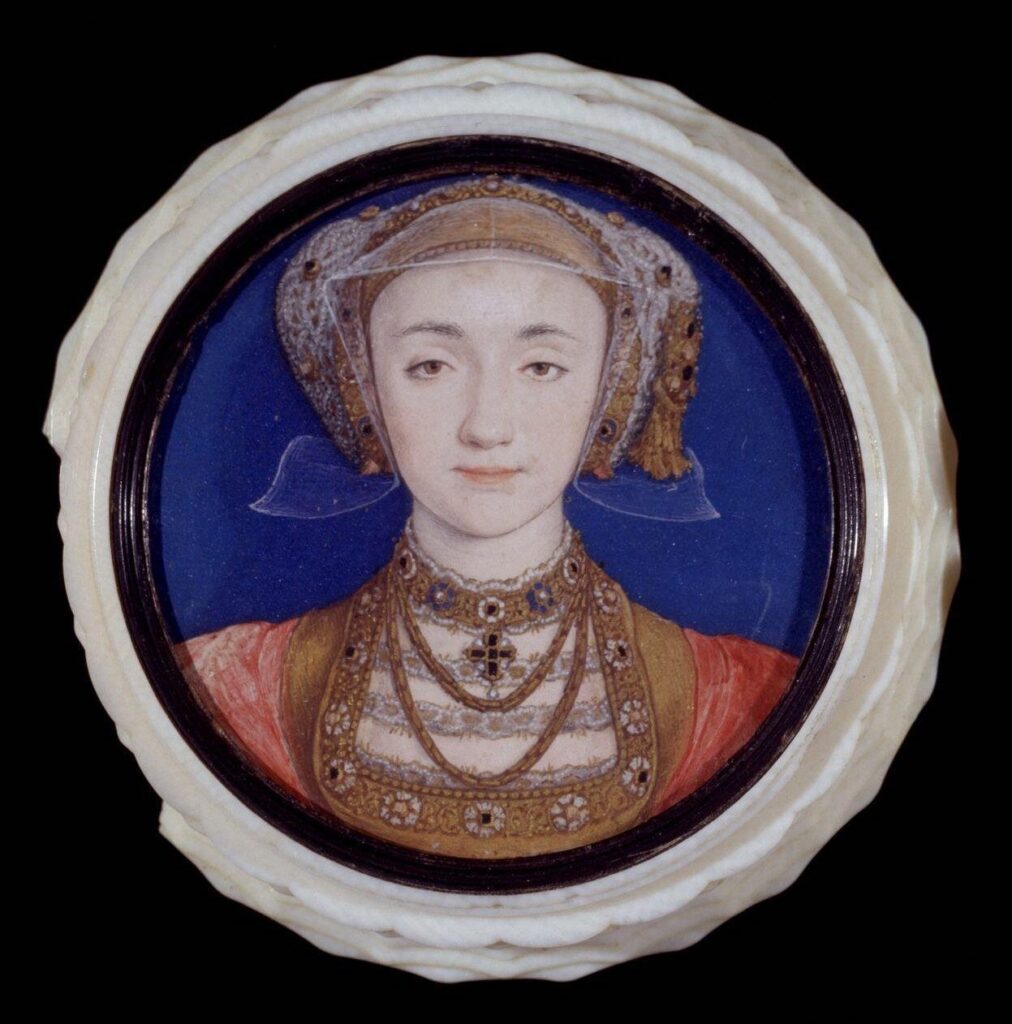
Painting and illuminating for the king and his wives
When Susanna arrived in England in the 1520s, when Katherine of Aragon was still the wife of Henry VIII. The queen had six recorded pregnancies but only one child, Princess Mary, would survive the perils of childhood and live to reach adulthood. In 1527 the king decided to annul his marriage to Katherine and marry her maid of honor, Anne Boleyn. During their courtship, Henry and Anne exchanged love letters written in French and in English. In one of the letters, the king mentions a gift: “my picture set in a bracelet.” It was certainly a miniature and the only workshop producing miniatures at this time in England was the Horenbout workshop.
In the early and mid-1520s the Horenbouts were actively working for the royal family, producing miniatures of Henry VIII, Katherine of Aragon and their daughter Princess Mary. The labels indicate they come from the Horenbout workshop. As Kathleen E. Kennedy pointed out, we have to acknowledge the possibility that Susanna was as likely as any Horenbout man to have produced Horenbout workshop paintings. Neither Lucas nor Gerard signed the miniatures they painted, but Lucas gets credit for the majority of the surviving pieces. Yet it is equally possible that Susanna was their author.
In addition to being a talented artist, Susanna had to skillfully navigate the complex dynamics of court life, cultivating alliances and ensuring her work aligned with the king’s tastes and preferences. She successfully did that, as the fact that she remained in Henry VIII’s good graces and served his successive wives attests.
Sylvia Barbara Soberton is a writer, independent researcher and art historian specializing in the history of the Tudors. She has written thirteen books to date; her newest title, Secrets of the Tudor Portraits, is available as of March 14, 2025. Her papers were published in the Royal Studies Journal and The Court Historian. Her interdisciplinary approach combines historical research with an in-depth analysis of visual culture, offering fresh perspectives on the representation and perception of Tudor-era personages.
More blog posts about female artists working in England
Susanna Horenbout, Courtier and Artist, by Kathleen E. Kennedy
A Room of Their Own: Now You See Us Exhibition at Tate Britain, by Kathryn Waters
Susannah Penelope Rosse: Painting for Pleasure in Seventeenth-Century England, by Anna Pratley
Mary Beale (1633–1699) and the Hubris of Transcription, by Helen Draper
“Black-works, white-works, colours all”: Finding Susanna Perwich in her Seventeenth-Century Embroidered Cabinet, by Isabella Rosner
Levina Teerlinc, Illuminator at the Tudor Court, by Louisa Woodville
Paper Portraits: The Self-Fashioning of Esther Inglis, by Georgianna Ziegler

